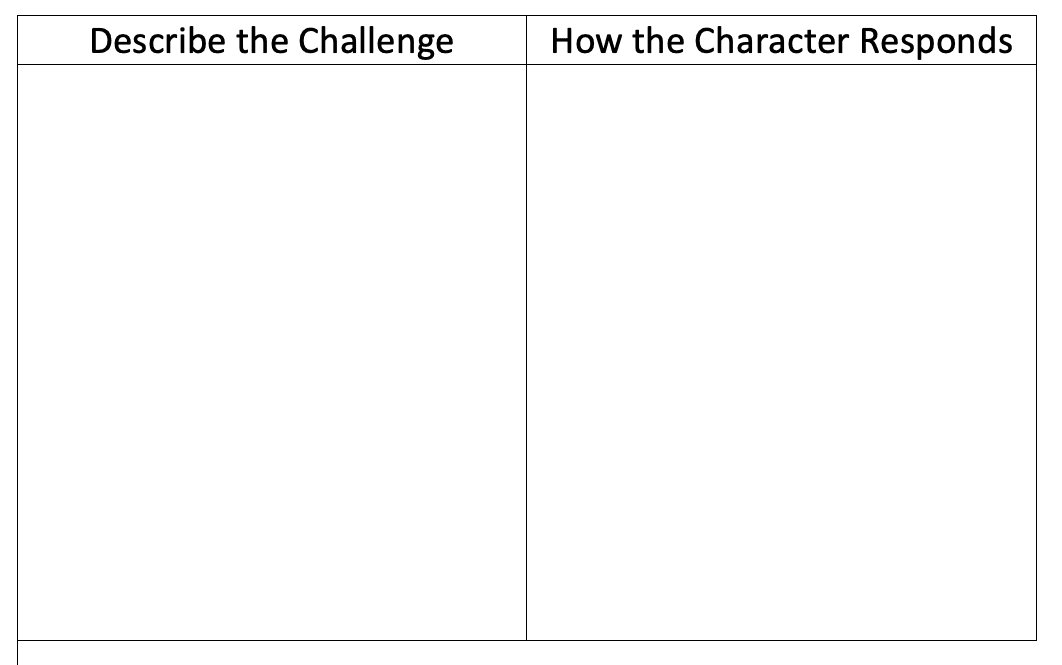The Perfect Shelter is a fantastic book to read with even your youngest kiddos. Today I want to share with you how you could use it as a mentor text in order to incorporate it into a lesson on character traits for your elementary-aged kids. I would recommend primarily using it to teach Kindergartners through third graders.
*We use affiliate links to share products with you. If you use the link to make a purchase, the cost of the book doesn’t go up for you. However, we will receive a commission and we do appreciate your support.
Summary
The story is told from the point of view of the youngest sibling in a family of four. She enjoys spending time with her sister building shelters to play in. This book is unique in that it portrays a multiracial family. I think this is an important read for kids in similar families so they can see themselves in a book.
Today’s the perfect day to build a shelter.
As this story unfolds, you learn that the oldest sister is diagnosed with an illness that causes her to be hospitalized. As a family, they work through this difficult situation that produces so many complicated feelings.
Even though they are dealing with intense emotions, the story is very uplifting. It’s beautiful how they support one another and find joy in the little things, like being together.
Understanding the standard
As students progress from Kindergarten to third grade, the idea of identifying character traits becomes increasingly more complex.
In Kindergarten and first grade, they simply describe the character using key details from the story. Note that this should focus on describing their personality (angry, humble, excited, kind, friendly, etc.) and not their looks. I have noticed that kids have a tendency to jump straight to describing what they see and not “what’s on the inside.”
Moving into second grade, students should be able to describe how a character responds to a major event or challenge. This builds on their ability from the year before because not only do they have to understand the event, they also have to describe the character before and after the event occurs.
Then, in third grade, the skill continues to increase in complexity because they will not only describe their traits and feelings, they will also identify how the character’s reactions contribute to the sequence of events in the story.
How I Would Teach Character Traits
- I would begin our lesson by discussing how characters will react to situations differently depending on their personalities. We could use personal examples that we have noticed or experienced at home (or school) to model this. You could consider talking about how families have responded differently to sending their children back to school in response to Coronavirus, for example.
You could also discuss an example from a familiar movie or story like Toy Story. After Andy receives a new toy for his birthday, Woody becomes jealous and Buzz Lightyear arrogantly sees every situation as an opportunity to save the world.
- Read The Perfect Shelter with your child. As you are reading, discuss what the major challenge is in the story.
Be sure to pay close attention to the details in the pictures, including the characters’ faces to determine how they feel. - After reading through the story, discuss the major problem and fill it in on a graphic organizer like this one:
- Read the story one more time and consider how each character responds to the problem of the older sister’s illness. Then, finish filling out the graphic organizer with each character’s response to the illness.
The younger sister shows her frustration, which is important! She’s not afraid of her emotions. Then, she grows in perseverance. The older sister is courageous and continues to comfort her little sister.
Alternative lessons…
There are other important elements to consider teaching while reading this special book. You might want to incorporate some of them as you read, or make one of these a lesson with your older readers.
Symbolism
The element of symbolism is seen in the storms that come each evening. The rain and its intensity seems to reflect the younger sister’s feelings.
The shelter that the two sisters build together is also a symbol of their relationship. Consider how it gets messed up because of a storm (a trial), but they happily rebuild it together. In the end, they even build one in the hospital. No “storm” can break the bond that they share.
Central Message
Discuss the central message of the story by asking, “What can we learn from this story?”
Social Emotional Learning
This story clearly promotes values of family love and communication. They are very open in sharing their feelings, as well as discussing the illness the older sister is experiencing.
I especially love the courage and perseverance that each character shows. It is best seen in the eyes of the little girl. Not only is this a character trait to discuss, it’s also important to talk about how we each need these character traits for ourselves.
Most importantly, this book opens up an avenue to helping families deal with difficult, complicated emotions. If your family is experiencing a similar situation, this could be a great way to begin that discussion with your little ones.
Teaching character traits is an important comprehension skill, as well as an important life lesson. Using The Perfect Shelter as a mentor text focused on character traits, and having your little ones make connections with the characters will inevitably help them to become a more compassionate person. Want to learn more? Read our post about the ways reading can make you a better person!
If you are looking for other great books to read with your kids, including discussion questions, be sure to check out the book reviews in our Library.




